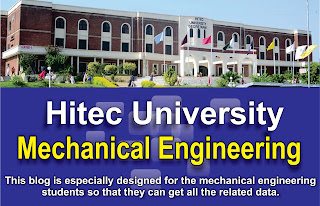Showing posts with label nozzle. Show all posts
Thernodynamics 2
By : Asad Ali ArshadIn this lecture we will discuss about.Ch-1 Thermo-II Week-3.pdf
null
- What is a turbomachine?
- Schematic of Jet Engine.
- Nozzels
As you know nozzle is a duct of smoothly varying cross section area in which a steady flowing fluid can be made to accelerate by a pressure drop along the duct. e.g nozzles are used in steam and gas turbines, in jet engines, in rocket motors etc.
In this lecture we will discuss the nozzle briefly.- Diffuser
When a fluid is decelerated in a duct, causing a rise in pressure along the stream. Its major applications are centrifugal pumps and ramjet.
- We will also discuss diffuser briefly.
- We have a long discussion on Nozzle Shape.
- Convergent Divergent Nozzle.
- Critical Pressure Drop
- Critical Temperature Ratio
- Critical Velocity
- Maximum Mass Flow
- Nozzle Off the design pressure ratio
- Convergent Nozzle
- Convergent Divergent Nozzle
- Nozzle Efficency
- Length of Nozzle
- The Steam Nozzle
All of the above topics are discussed in detail in the above given slides.
Thermodynamics 2
By : Asad Ali Arshad
A Nozzle is a duct of smoothly varying cross-sectional area in
which a steadily flowing fluid can be made to accelerate by a
pressure drop along the duct.
E.g., nozzles are used in steam and gas turbines, in jet
engines, in rocket motors, in flow measurement, in
injectors, in ejectors etc.
Diffuser: When a fluid is decelerated in a duct, causing a rise in
pressure along the stream.
Major applications: Centrifugal Compressor and
the Ramjet.Analysis here will be restricted to One-dimensional Flow it is assumed that the Fluid Velocity, and the Fluid Properties, change only in the direction of the flow.
Fluid velocity is assumed to remain constant at a mean value across the cross-section of the duct.
Friction will not be analyzed Fundamentally, suitable efficiencies or coefficients being adopted to allow
for the departure from the ideal friction less case.
Further Explanation of variation of Nozzle-Areawith decreasing Pressure.
At low velocities the density is constant and therefore as the area gets smaller (Convergent Nozzle) the velocity must increase to keep ρVA constant. This is the case we are used to in our day to day lives. In reality, as velocity increases, the decreasing static pressure allows the air to expand. So as air accelerates through a convergent duct its volume gets bigger. At speeds closer to the speed of sound, the density is not a constant any more. At these speeds the fluid is sort of stretched out and less dense: the higher the velocity the lesser dense the fluid becomes. At this point we notice that the density and the velocity work in opposite directions in the quantity ρVA, that is, meanwhile more V brings ρVA higher, less ρ brings ρVA lower.
If in the nozzle we continue to make A smaller (convergent), eventually we will reach the point where ρ out-powers V in the expression ρVA and the velocity cannot go higher anymore. In other words, ρV reaches its maximum. Any increase in V will cause a decrease in ρ such as the quantity ρVA would be smaller and this is not possible, ρVA must be a constant. The value of V when this maximum happens is the speed of sound for this particular fluid and conditions. since the quantity ρV is at its maximum, the mass flow rate ρVA is at its maximum as well. In other words, it is impossible to increase the mass flow rate no matter what and the nozzle is said to be choked.
After the speed of sound is reached, if we increase A (divergent nozzle), V will continue to go up and ρ will continue to go down in such a way that ρVA will remain still constant. Effectively the fluid now behaves the opposite way, it will increase its velocity as the area increases and all because of the inverse relationship between the density and the velocity of the fluid.
|
Hitec Mechanical Engineering
Mechanical Engineeirng Hitec Mechanical Engineering As we know Mechanical Engineering is the branch of engineering dealing with the des...











